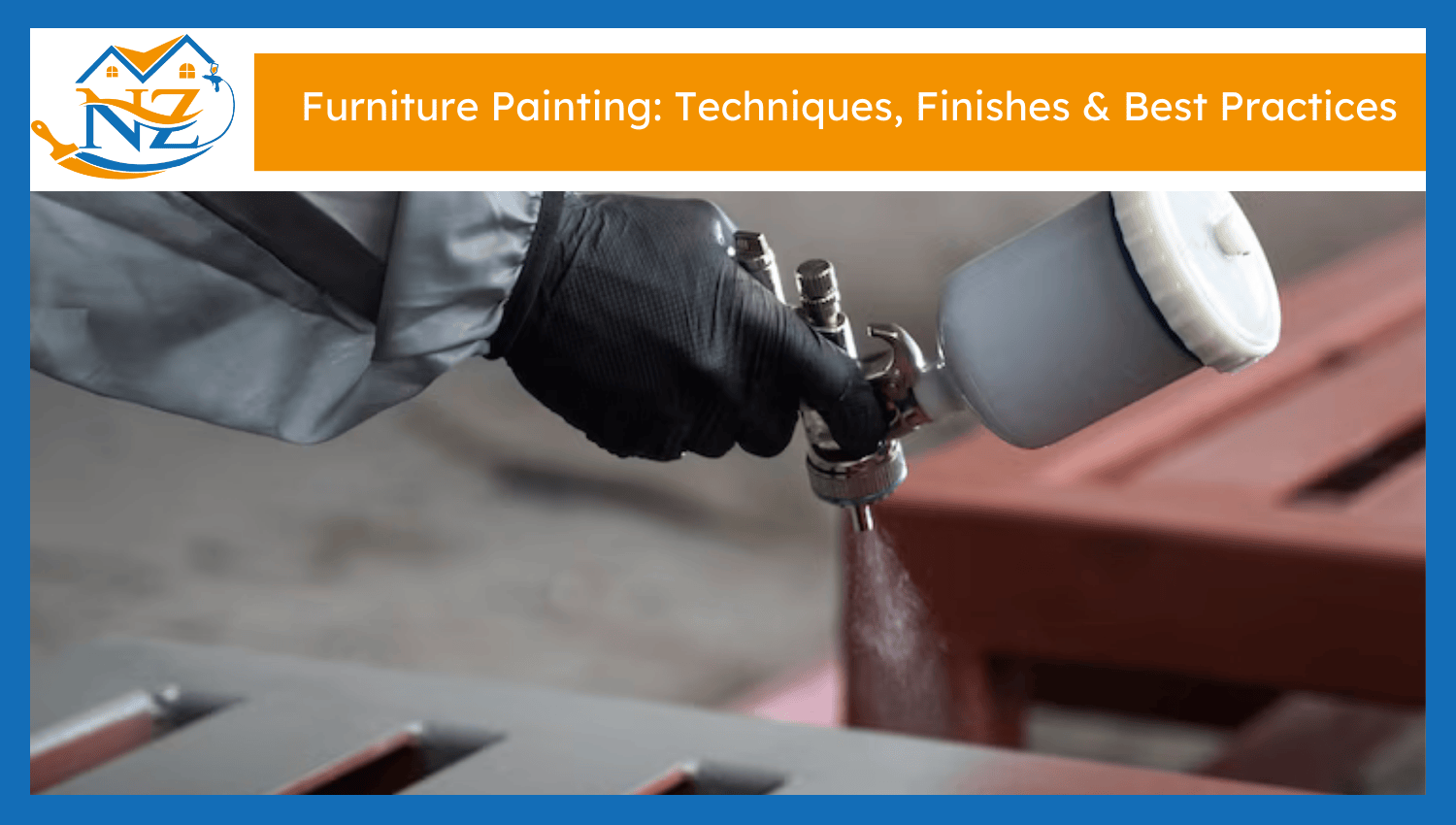

Painting furniture is an easy method to update tired-looking pieces. It gives a colorful finish, protects surfaces, and gives an attractive look. Furniture that is painted can match both modern and classic style rooms. You can use this method on wood, metal, plastic, or upholstered things. A carefully chosen paint and finish can help increase durability and give a better look. Giving your furniture a new coat of paint is an easy and creative way to update the look of your home or office. It makes it possible to use existing décor without the need to pay for replacements. The right treatment can make your furniture look clean, fashionable, and new.
The following are the 4 main types of furniture painting depending on the material and surface:
Wooden furniture can be painted using chalk, latex, or acrylic paint. When you sand and prime the surface well, painting becomes easier. Using oil-based paints gives your surfaces a classic finish, while water-based paints give them a trendy look. Adding wax or varnish helps make a wood finish stronger and attractive. Sometimes the natural grain of the wood is highlighted, and other times it is hidden, depending on how the surface is treated.
Metal furniture is strong, durable, and usually used indoors and outdoors. Paint prevents rust and gives the metal a new look. Before you paint metal furniture, you need to clean it of rust and grease. It is important to use a metal primer for lasting results. Spray painting creates an even layer of paint on the surface. Another way to get a strong, expert-quality finish is with powder coating. Matte, gloss, or textured finishes can affect how nice the furniture looks and feels.
A plastic surface is smooth and nonporous, which means that paint does not adhere to it without proper preparation. It is important to prepare the plastic carefully before you start painting. A quick sanding and a suitable plastic primer ensure the paint stays put. Use special spray paints that are meant for plastic. Thin applications prevent dripping and give a clean result. Sealing sprays can help to boost the life of your furniture. New colors and designs can take ordinary plastic items and make them look fashionable in any room.
Upholstered furniture means sofas, chairs, and headboards made with covers of fabric or leather. You need special paint for them, as the surfaces are soft and flexible. You can use fabric paint when refreshing upholstered furniture. Be sure the fabric is clean and completely dry before you start. You can get an even finish by using either soft brushes or foam rollers. Thin layers of paint help avoid paint drying out and becoming stiff. Heat setting or sealing the paint makes it last longer. It involves changing the color of the fabric while the upholstery remains the same.
Here are the 3 essential techniques for successful furniture painting:
When the surface is clean and dry, you are more likely to get better results from painting. Clean away dust, grease, and any old coatings. Sanding takes care of bumps and prepares the surface for a stronger hold of paint. Use wood filler or putty to plug up cracks or holes. Make sure to wipe the surface clean after you sand. Primer holds the stain and creates a level background for applying paint.
Different tools create different results. You can easily work in close spaces with a brush, as it gives you control. Rollers quickly and evenly tackle flat parts of the painting. They help achieve a bug-free and even surface. If you’re working on something small, dip painting is ideal. Be sure to maintain good lighting and clear ventilation when you are working. Apply a smooth and even layer to help get rid of any defects in the previous coat.
Your paint needs to be thin and evenly spread out to prevent it from dripping. Let the paint dry between each layer. Rubbing lightly between each coat can make the surface feel smoother. Protect the layers of paint and your floor by applying a topcoat or sealer. If you use wax or polyurethane on your pieces, they become more attractive, sturdy, and last longer.
Below are the 3 effective practices for lasting and smooth furniture painting:
Every surface needs to be painted with the correct type of paint. You can apply chalk or latex on top of wood. Metal needs rust-resistant paints. Choose paint that can stick to glossy surfaces if you are using plastic. It is easiest to use flexible fabric paint on upholstery. Always use a matching primer. Choose the texture finish you want, for example, matte, satin, or gloss.
Paint dries at different rates depending on its type and the environment in the room. Before you put on another coat, see to it that all the moisture in the previous coat is gone. Make sure you don’t touch or move anything while the air dries. It takes more time to cure paint than to dry it, and this ensures that it becomes fully hardened. Maintain a dust-free and dry environment for the furniture until the curing is done. This prevents surface damage.
If you have painted surfaces, wipe them down with a soft, damp cloth. Do not use strong cleaners or scrub your surfaces too roughly. Make sure furniture legs are protected with felt pads to prevent scratches. Do not expose painted objects to direct sunlight or moisture. If necessary, use the original paint to touch up the area. A good care routine ensures the finish is always fresh and not damaged.